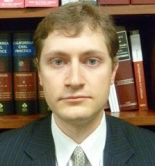Grinberg: Absent Evidence of Causation, At-Work Collapse Not AOE/COE
Friday, January 18, 2019 | 1
Pop quiz: A worker collapses on the job and ultimately expires. No witnesses appear with an explanation of what happened — no trauma, no blows, no anything. He just collapses and dies.

Gregory Grinberg
Does his widow receive death benefits through the workers’ comp system?
As everything in law, it depends.
Such were the facts, or fairly close thereto, in the matter of Perez v. Deardorff Jackson Co. a recent writ-denied panel decision.
The decedent worked as a harvester for defendant and, on the alleged date of injury, collapsed in the field and fell unconscious. At the hospital, his family advised his physicians that he had a history of untreated hypertension. The relevant medical reports reflected that he was being seen for a “hypertension emergency … suspected of being secondary to amphetamines.” An in-hospital drug screen showed methamphetamine use.
The decedent died in the hospital later that month, and the coroner listed cause of death as “sequelae of hypertensive stroke.”
An application was filed 364 days after the original injury and was timely denied by defendants on the basis of lack of evidence of industrial causation, and the affirmative defense of intoxication. After the matter was set for trial on the issue of arising out of employment/course of employment and the intoxication defense, the judge found that the decedent (and his widow, the applicant) could not carry the burden of establishing industrial causation.
At trial, applicant argued that the case of Clemmens v. WCAB requires a death from a “mysterious cause” to be found industrial. However, the workers' compensation judge reasoned that the Clemmens court opined that when the likely cause of death from mysterious circumstances is neutral as to causation, it is acceptable to assume industrial causation in that the work activities exposed the deceased worker to harm.
By contrast, the immediate case was not neutral as to the causes. Applicant had a history of untreated hypertension, and a drug screen showed methamphetamine use, suggesting a personal cause for the death. The contrary argument, that his physical exertions at work caused his death, would be an industrial cause.
In either case, the WCJ reasoned, the Clemmens case was not applicable.
But what was applicable was Labor Code section 5705 — the burden of proof rests on the party asserting the affirmative of the issue. In this case, as it might be a toss-up, a who-done-it, a who-the-heck-can-say as to AOE/COE, applicant fails to carry her burden as to the cause of her deceased husband’s death.
Now, for those a bit farther away from the front lines at the board, let me give you a taste of some of the prevailing logic in the negotiation rooms: “Hey, if it’s a toss-up, the applicant wins, so accept the case and pay up.”
Well, this blog brought to your attention the case of Lantz, in which the Court of Appeal rejected the application of Labor Code section 3202 (“… shall be liberally construed by the courts with the purpose of extending their benefits for the protections of persons injured in the course of their employment”) until there had been a showing of compensability.
So, if it’s a real toss-up on the threshold issue of compensability, the Labor Code, the regs and the universe are all not liberally construed to hand a victory to the applicant. The preponderance of evidence standard still applies.
After trial and a “take-nothing,” the Workers' Compensation Appeals Board denied reconsideration, adopting and incorporating the WCJ’s report on reconsideration. At the end of November 2018, the Court of Appeal denied review.
Gregory Grinberg is a workers' compensation defense attorney at the Law Office of Gregory Grinberg, based in the San Francisco Bay Area. This post is reprinted with permission from Grinberg's WCDefenseCA blog.







Comments